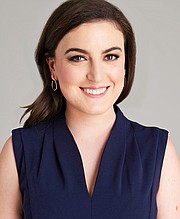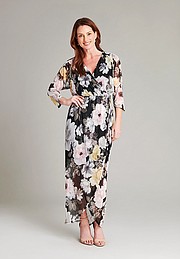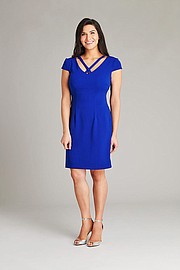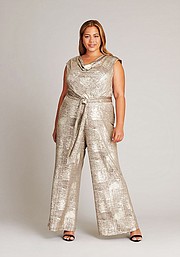RETAIL
The Disappearance of Dressbarn Emphasizes the Need for Manufacturers to Develop New Business Models
The recent announcement that Dressbarn was closing its chain of 650 stores drove home the growing dilemma for U.S. apparel manufacturers. There are just fewer retailers to sell to these days.
That has been the case for Connected Apparel, a family-owned brand that sold to Dressbarn. It is headquartered in Commerce, Calif., and has been making and selling dresses since 2000 with the help of 140 employees.
Jay Balaban, Connected Apparel’s founder and chief executive officer, has spent the last decade watching the retail world change by leaps and bounds. The department-store business merged and consolidated, e-commerce began challenging conventional retail stores, and websites continue to take a bigger chunk out of traditional retailing.
This has all proved to be challenging to people like Balaban. “We have to pull up our bootstraps and do everything we can do to make great product for the retail customer and online,” he said.
Wholesaling will continue to make up an important part of Connected Apparel’s business. “The goal is to tap into the customer by expanding brand awareness and selling to her directly,” Balaban said. “As the industry changes, she may have less avenues to shop Connected Apparel. With e-commerce, she can come directly to us.”
To face a changing market, the apparel executive plans to develop a strong brand identity with the help of his daughter, Leanna Balaban, who was hired in November 2017 as the company’s director of marketing and communications.
Part of her job has been to develop the company’s direct-to-consumer sales, which launched in October. The company’s e-commerce site, connectedapparel.com, currently makes up 5 percent of the company’s revenues.
Connected Apparel has also been expanding its overseas business. It currently sells to retailers in 10 foreign countries including Germany, Poland, Chile, Great Britain, Australia, Canada and Mexico.
Connected Apparel’s situation is not unique, said Rob Greenspan, founder and president of Greenspan Consult, which advises apparel and fashion-manufacturing companies. “It’s a huge problem in the industry today. There are fewer retailers to sell to,” Greenspan said.
Every fashion business must become more entrepreneurial, he added. “Because of the fast-changing pace of the industry, you have to make decisions quicker,” he noted.
Greenspan suggested that manufacturers examine their services and products when their wholesale customers go out of business. “If a customer is going out of business, what does it say about their product line? Or are customers buying from a different channel such as e-commerce,” he said.
Going digital is a good idea, said Ron Friedman, a partner at Marcum LLP, a retail consulting and accounting firm, but it has pitfalls. Successful direct-to-consumer ventures can make a lot of money because they keep their wholesale gross profits and their retail gross profits.
But the direct-to-consumer retailers that realize the most success are typically the ones with well-known brand names or who create brand equity through heavy marketing campaigns. For those who don’t have wide brand-name recognition, it might be hard to carve out a niche.
Friedman also suggested strengthening and expanding a company’s wholesale business. It will increase opportunities to earn revenue. Wholesale can also help develop more brand exposure because more products are displayed in the marketplace. Develop a brand to sell to high-end retailers and a different brand to sell to value retailers. Both luxe and value retailers continue to perform well.
Despite the disappearance of Dressbarn, dresses remain a category with a lot of potential, said Marshal Cohen, chief industry analyst of The NPD Group retail consultants. “This is a great market to cater to,” he said. “[Women’s] career and lifestyle changes create the need for all-new wardrobes.”




























